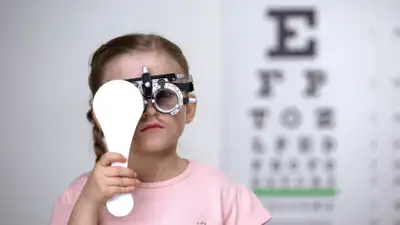ARTICLE AD BOX

Myopia or near-sightedness, is one of the most common vision issue today, especially among children, teens, and young adults. Despite its prevalence, myths and misconceptions about myopia often fuel fear and stigma.
Our mission is to not only treat myopia but also empower people with clear and accurate information. Let’s debunk few common myths about myopia and clarify what it means for your health, lifestyle, and future.Myth 1: Myopia is a diseaseFact:Myopia is not an illness—it's a routine refractive disorder. The shape of the eye makes the light focus ahead of the retina, so it makes objects at a distance blurry. Pervasive in 30-40% of adults in India, it's simply treated with glasses, contact lenses, or operations such as LASIK and Phakic IOLs.
While severe myopia will slightly elevate the risk of its complications, routine eye checkups maintain these under control.Myth 2: High myopia means you shouldn't marry or have kidsFact:This myth has no medical foundation. Severe myopia (stronger than -6.00 diopters) can possibly increase the risk of retinal problems but does not impact fertility, marriage, or raising children. Kids whose parents are myopic are potentially more likely to be myopic themselves (2-3 times), but early eye exams, 2+ hours a day of outdoor activities, and good eye care can slow or delay its development.
Myth 3: Wearing glasses worsens myopiaFactThis is a persistent myth. Glasses straighten vision by directing light onto the retina where it belongs—they do not make myopia worse. Not wearing glasses can lead to eyestrain, blurry vision, amblyopia, or poor school performance in children. A proper, up-to-date prescription provides comfortable, effective vision.Myth 4: Myopia always gets worse with ageFact:For the majority, myopia increases through childhood and settles in early 20s. Though it sometimes increases in pre-adulthood (particularly for high myopia or overuse of screens), behaviors such as 2+ hours of daily outdoor activities for children, restriction of screen time and regular break while studying and performing near work can be helpful in retarding the progression.
The application of Myopia control lenses can also contribute to slowing down the progression of Myopia.Myth 5: Laser surgery is risky or unsafeFact:Laser procedures such as LASIK or SMILE are effective and safe for the vast majority of eligible patients, with more than 95% having better vision. These procedures correct the shape of the cornea, in many cases removing or decreasing dependence on glasses. Uncommon complications such as dry eyes are minimized with careful pre-surgery testing by an eye doctor.Myth 6: Myopia control glasses are just a marketing tool.Fact:Myopia control glasses are not just a marketing ploy — they are founded on developing clinical research that seeks to decelerate myopia progression among children. While individual results may differ but they have produced positive results, Myopia control glasses are scientifically constructed to decelerate myopia progression among children. Research indicates these lenses have been shown to cut progression by as much as 50-60% when compared with regular glasses by changing the way light converges in the eye.
They're not a fix, but if prescribed by an eye care practitioner and used along with lifestyle modification such as outdoor activity, they're a very effective tool for controlling myopia in children.Myopia is common, manageable, and no barrier to a vibrant life whether it’s your career, relationships, or dreams. The true challenge of myopia lies in the stigma and misinformation that follows it. With the right information, intervention like routine eye exam, outdoor time, or corrective options such as myopia control glasses, contact lenses, or surgery, you could enjoy clear vision and confident decisions.
Let's clear the stigma and misinformation of myopia, and advocate for healthy eyes!(Dr Vikas Jain, Group COO, ASG eye hospitals)



.png)
.png)
.png)
















 16 hours ago
4
16 hours ago
4








 English (US) ·
English (US) ·